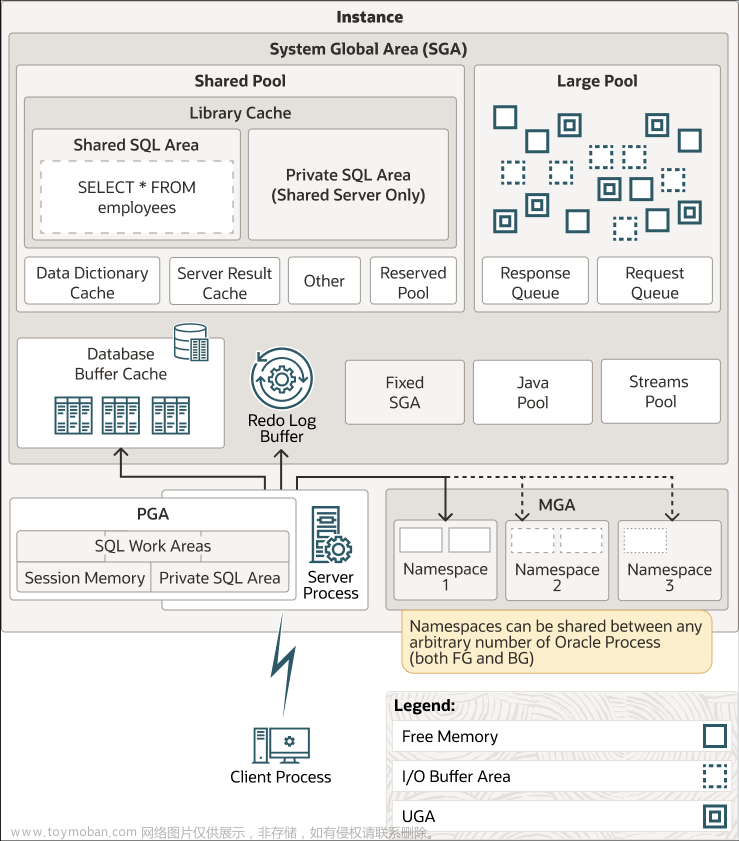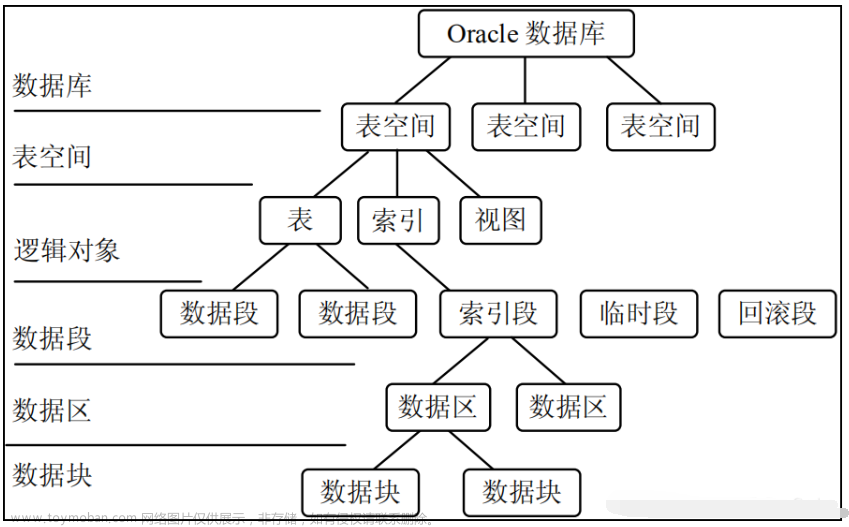目录
一、over()开窗函数
二、无参over()的使用
三、over(partition by 列名)
四、over(order by 列名 asc/desc)
五、over(partition by 列名 order by 列名 asc|desc)
六、练习(笔试)
一、over()开窗函数
拓展:数据库的版本
oracle:8i 9i 10g 11g 12c 18c 19c
mysql:5.x 8.0 (没有7.x、6.x)
-- 一、开窗函数 over() ---
over函数的使用:在select的子句中使用,语法:
计算函数部分() over(partition by 列名 order by 列名 asc|desc) group by
其中:
1、计算函数部分:聚合函数、排名函数、平移函数等 只能是一个函数
2、partition by :分组,不是必选项
3、order by:排序,不是必选项
4、over()函数有4种使用方法,即:参数二选一,不带参数,全带参数
*/
二、无参over()的使用
-- 一、开窗函数over()的第一种用法:over()
-- 1、计算函数部分() over():对整个表格进行计算
-- 例题一:查询emp表中的最高工资、最低工资、平均工资
select max(sal),min(sal),avg(sal) from emp
-- 注意:1、聚合函数在一个结果集中计算 返回值是一样
-- 2、over() 新生成的一个列 返回的行数是原来表的行数
select
empno,sal,
max(sal) over() maxsal,
min(sal) over() minsal,
avg(sal) over() avgsal
from emp;
-- 例题二、找出emp表中工资最高的员工信息
----方法1:子查询
---a.找出最高的工资
select max(sal) from emp;
---b.where条件子查询 单行值子查询
select * from emp
where sal = (select max(sal) from emp) ;
----方法2:开窗函数+from 子查询
---a.开窗函数
select emp.*,max(sal) over() maxsal from emp;
---b.from 子查询
select * from
(select emp.*,max(sal) over() maxsal from emp)
where sal = maxsal;
---with as语句
with a as (select emp1.*,max(sal) over() maxsal from emp1)
select * from a where sal = maxsal;
----方法3:开窗+from 条件子查询
---a.开窗
select emp1.*,max(sal) over() maxsal,sal - max(sal) over() c from emp1;
---b.from 条件子查询
select * from
(select emp1.*,max(sal) over() maxsal,sal - max(sal) over() c from emp1)
where c = 0;
---with as 语句
with a as (select emp1.*,max(sal) over() maxsal,sal - max(sal) over() c from emp1)
select * from a where c = 0;
-- 练习三、计算emp表中每个员工你的工资和最高的比值是多少
select emp.*,max(sal) over(),sal/max(sal) over() from emp;
-- 练习四、计算emp表中每个员工的工资和最高工资的差值是多少?
select emp.*,max(sal) over(),sal-max(sal) over() from emp;
三、over(partition by 列名)
-- 使用方式二(带单个参数)、over(partition by 列名)
/*
partition by 与 group by的区别
group by会将结果集按照字段进行聚合,结果集会缩减,在统计部门人数,平均工资等会用到
partition by 会对结果集按照指定字段分层排列,结果集不会缩减,如将公司全部人
*/
-- 在emp表中查询每个部门工资最高的员工信息
-- 1、找出每个部门的最高工资
-- group by 的写法
-- 1.1 对部门分组,同时要保持一致性
select deptno,max(sal)
from emp group by deptno
;
-- 1.2 多列子查询
select * from emp
where(deptno,sal) in(
select deptno,max(sal)
from emp group by deptno
)
;
-- 使用开窗函数 over()
-- 1.1 over()
select emp.*,
max(sal) over(partition by deptno) maxsal
from emp;
-- 查询到的数据并不会缩减,每个员工的信息都会多出一列当前部门的最高工资
-- 1.2 加上条件和from查询
select * from(
select emp.*,
max(sal) over(partition by deptno) maxsal
from emp
)where sal = maxsal
;
-- with as写法
with a as(select emp.*,max(sal) over(partition by deptno) maxsal from emp)
select * from a where sal = maxsal;
-- 2、在emp表中计算每个人在部门工资总和中所占的比例
-- 2.1 over()开窗
select emp.*,
sum(sal) over(partition by deptno) sumsal
from emp
;
-- 2.2 over开窗+form子查询
select * from(
select emp.*,
sum(sal) over(partition by deptno) sumsal
from emp
);
-- 2.3 求每个人在工资总和中的比例
select empno,ename,sal,sumsal,sal/sumsal
from(
select emp.*,
sum(sal) over(partition by deptno) sumsal
from emp
);
-- 2.4 四舍五入:round(值,保留小数位)
select empno,ename,sal,sumsal,round(sal/sumsal,2)
from(
select emp.*,
sum(sal) over(partition by deptno) sumsal
from emp
);
四、over(order by 列名 asc/desc)
对整个表,对排序的列进行依次的累计运算,并列的名次和数据
会当成一个整体进行计算(一次性计算)
-- row_number():根据某个列,按照顺序进行排序 1、2、3、4
-- rank():根据某个列,按照顺序进行排序,如果值相同,会出现并列的名次,会跳过占用的名次:1、2、2、4
-- dense_rank():根据某个列,按照顺序进行排序,如果值相同,会出现并列的名次,不会跳过名次:1、2、2、3
--rownum 取行号函数(系统关键字)只能 <= 不能 > 从1开始可以 >=
-- 1、对row_number列以sal排序
select emp.*,row_number() over(order by sal) from emp;
-- 2、对 rank()列以sal排序
select emp.*, rank() over(order by sal) from emp;
-- 3、对dense_rank()列以sal排序
select emp.*,dense_rank() over(order by sal) from emp;
-- 4、rownum 以sal升序排序(这个需要用到子查询)
select a.*,rownum r from
(select * from emp order by sal) a;
-- 5、练习:在成绩表中查询c001课程成绩的前6~10名
-- 5.1、查询到coo1的成绩排序
select * from sc_a01;
select sc_a01.*,row_number() over(partition by cno order by score desc)
from sc_a01
where cno = 'c001'
;
-- 5.2 合并子查询
select * from (
select sc_a01.*,row_number() over(partition by cno order by score desc) r
from sc_a01
where cno = 'c001'
)where r between 6 and 10;
五、over(partition by 列名 order by 列名 asc|desc)
/*
over(partition by 列名 order by 列名 asc|desc):
在每个分组中,对排序的列进行依次的累计运算,并列的名次和数据,会当成一个整体进行计算
*/文章来源:https://www.toymoban.com/news/detail-693158.html
-- 1、在emp表中,找出每个部门的最高工资,对应的员工信息
select * from (
-- 子查询
select emp.*,max(sal) over(partition by deptno order by sal desc) maxsal
from emp
)where sal = maxsal;
-- 2、在emp表中找出每个部门的员工的工资和该部门最高工资的差值
select emp.*,max(sal) over(partition by deptno order by sal desc) maxsal,
sal-max(sal) over(partition by deptno order by sal desc) cha from emp;
-- 3、在成绩表中计算每门课程前 1-10名的信息
-- 3.1 对成绩做出排序
select a.*,row_number() over(partition by cno order by score desc) r
from sc_a01 a
;
-- 3.2 合并子查询
select * from(
select a.*,row_number() over(partition by cno order by score desc) r
from sc_a01 a
)where r between 1 and 10;
-- 4、在成绩表中计算每门课程前1-10名的总分
-- 4.1 已查询到每门课程的前10名
select * from(
select a.*,row_number() over(partition by cno order by score desc) r
from sc_a01 a
)where r between 1 and 10;
-- 4.2 再此基础上加上分组计算
select cno,sum(score) from(
select a.*,row_number() over(partition by cno order by score desc) r
from sc_a01 a
)
where r between 1 and 10
group by cno
;
select * from emp;
-- 5、在emp表中计算每个部门前六名的工资总和
select deptno,sum(sal) from(
select e.*,row_number() over(partition by deptno order by sal desc) r
from emp e
)
where r <= 60
group by deptno
;六、练习(笔试)
 文章来源地址https://www.toymoban.com/news/detail-693158.html
文章来源地址https://www.toymoban.com/news/detail-693158.html
/*
二、练习题
-- case when 条件判断
case
when 条件判断1 then 条件为真
when 条件判断2 then 条件为真
...
else 所有条件都为假的时候
end
else 可以省略,可以生成一个或多个列
*/
-- 1、建表填入数据
create table info(
id number,
name varchar(20)
)
select * from info;
insert into info values(1,'/');
insert into info values(2,'A');
insert into info values(3,'B');
insert into info values(4,'C');
insert into info values(5,'/');
insert into info values(6,'D');
insert into info values(7,'E');
insert into info values(8,'/');
insert into info values(9,'F');
insert into info values(10,'C');
insert into info values(11,'H');
-- 方法一、
-- 1.1、筛选出不包含/的数据
select * from info where name <> '/';
-- 1.2、使用case when语句
select id,name,case
when id between 2 and 4 then 1
when id between 6 and 7 then 2
when id between 9 and 11 then 3
end group_id
from info where name <> '/';
-- 方法二、
-- 2.1 单个结果的查询
select id,name,1 group_id from info where id between 2 and 4;
select id,name,2 group_id from info where id between 6 and 7;
select id,name,3 group_id from info where id between 9 and 11;
-- 2.2 拼接三个查询结果:使用 union all
select id,name,1 group_id from info where id between 2 and 4
union all
select id,name,2 group_id from info where id between 6 and 7
union all
select id,name,3 group_id from info where id between 9 and 11;
-- 方法三、开窗
-- 3.1 筛选没有 / 的
select id,name from info where name <> '/';
-- 3.2 对id排序
select id,name,row_number() over(order by id) r from info where name <> '/';
--- 3.3完善--用id-row_number 刚好就可以满足到题目条件,再以group_id分组
select
id,name,row_number() over(order by id) r,id-row_number() over(order by id) group_id
from info
where name <> '/'
;到了这里,关于Oracle-day6:over()函数的文章就介绍完了。如果您还想了解更多内容,请在右上角搜索TOY模板网以前的文章或继续浏览下面的相关文章,希望大家以后多多支持TOY模板网!










